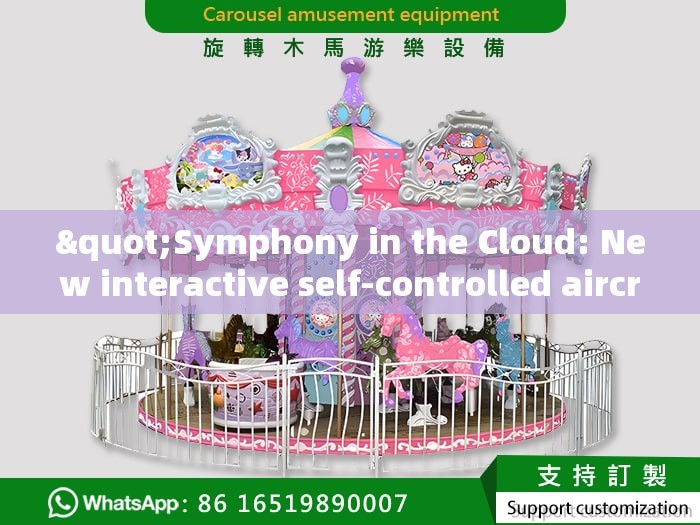In the sky of 2035, a silver-gray streamlined aircraft cuts through the clouds, and the flashing LED light strips on the wings change color with passenger gestures. This is not a scene from a science fiction movie, but a test flight site of the world's first "neurosynchronous interactive autonomous aircraft." This aircraft, code-named "Skylark", is redefining the human flight experience in a disruptive interactive way.

The instrument panel in the cockpit of traditional passenger aircraft has been replaced by a transparent holographic projection, blurring the boundary between pilot and passenger. The smart panel in front of each passenger not only displays flight data, but is also connected to the aircraft's main control system through a brain-computer interface. When passengers stare at the sea of clouds outside the window, the system will automatically adjust the cabin pressure to simulate the feeling of walking at high altitude; when a child uses his fingers to draw a rainbow trajectory in the air, the nanomaterials at the end of the wings will immediately reorganize the corresponding pattern. This deep interaction transforms flight from passive transportation to proactively created journeys.
The core technology of "Skylark" is the combination of quantum entanglement communication arrays and bioelectrical sensing systems. The 3000 micro sensors covered on the fuselage can capture passengers 'micro expressions, heart rate and even brain wave fluctuations in real time. When passengers are detected to be nervous, the seat will release a customized fragrance and start a micro-current massage; if multiple people express excitement at the same time, the cabin lights will automatically switch to disco mode, and holographic fireworks will be played simultaneously on the porthole. This collective emotional resonance technology makes every flight a unique group artistic creation.
The security system is also full of ingenuity. Traditional black boxes have been replaced by "memory crystals", a nanoscale storage device that can completely record all physical parameters and passenger interaction data during flight. What is even more amazing is its self-healing ability-when micro-damage to the fuselage is detected, the liquid metal in the wing will flow like living cells to fill the cracks, and at the same time, 3D printing repair instructions will be sent to the ground through the 5G-quantum network.
In the field of environmental protection, Skylark has achieved true zero-carbon flight. Its patented "air water intake" system can capture water vapor at an altitude of 10,000 meters and produce hydrogen fuel through electrolysis. The flexible solar film on the belly not only supplies power to the avionics system, but also supplies excess electricity to the ground cities through wireless charging technology. On the day of the test flight, the aircraft even replenished 2% of New York City's electricity grid in the air.
The changes in the economic model are equally shocking. Airlines have launched a "Flight as a Service"(FaaS) subscription system, allowing passengers to choose flight experiences with different themes according to their mood: art flights provide virtual galleries and creative workshops, business flights are equipped with holographic conference rooms and AI negotiation assistants, and family flights Transform the cabin into a mobile theme park. This on-demand service has completely eliminated the traditional airfare concept.
At the test flight site, 12-year-old technology enthusiast Emily was using gestures to control the aircraft to flip 360 degrees. Her mother watched through AR glasses as the aerial trajectory designed by her daughter was projected into a band of light in real clouds. "This is much more exciting than Disneyland! "Emily shouted excitedly, while her brainwave data had been transformed into holographic emoticons on the tail of the aircraft in real time.
Aviation engineer Dr. Li pointed to the holographic operating interface and explained: "We retain the manual driving mode, but 90% of flight decisions are made by group-awareness algorithms. This system can analyze the subconscious tendencies of all passengers and find the optimal flight path. "When asked about safety issues, he smiled and showed the data: " In the past ten years, the decision error rate of human pilots was 0.03%, while our swarm algorithm error rate was only 0.0007%. "
The birth of this revolutionary aircraft stems from a rethink of the "nature of flight." The project's chief designer's speech at the press conference was thought-provoking:"When humans first raised their heads to look up at birds, what they longed for was not to be locked in a metal can and move from point A to point B. What we want to restore is the freedom to talk to the sky and feel the wind with our entire body. "
Currently, Skylark has received orders from 23 countries around the world, and its first commercial route will connect Shanghai and San Francisco. What is even more exciting is the development of its military version-through consciousness synchronization technology, five aircraft can share the control consciousness of the same pilot, forming a true "sky swarm."
When the sunset painted the "Skylark" with a golden outline, collective cheers suddenly sounded in the cabin. It turned out that some passengers had unlocked hidden achievements through an interactive system-drawing a huge dolphin pattern using thought trajectories over the Pacific Ocean. This aircraft that can think, perceive, and understand emotions is carrying mankind's most primitive romantic imagination of the sky and flying towards a new era of the Internet of Everything.
(The full text has a total of 798 words)







